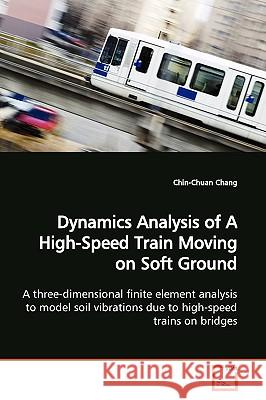Dynamics Analysis of A High-Speed Train Moving on Soft Ground » książka
Dynamics Analysis of A High-Speed Train Moving on Soft Ground
ISBN-13: 9783639168617 / Angielski / Miękka / 2009 / 104 str.
The 3D finite element analysis were used in this research to investigate surface ground vibration due to a moving train. This 3D finite element mesh includes the soil and bridge meshes modeled by using the 3D 8-node element. After FEM analysis, 1/3 octave band method was used in frequency domain to compute the vibration from the ground velocity in time domain. The resonant vibration in this study can be clearly seen from the finite element result. As an illustration of the numerical analysis, the train speed v approaches the Rayleigh wave velocity in supporting soil; a large peak has been occurred in the figure approaching track-soil critical velocities. However, it does not have a large increase in generated ground vibrations in the bridge-train-soil model simulated by the finite element method. The vehicle-bridge resonance triggers the greater part of vibrations than the vehicle-soil resonance for the three-dimensional vehicle-bridge-soil system. To be valid for avoid bridge and train resonance, the first dominated train frequency and the first bridge natural frequency in each direction should be as different as possible.











